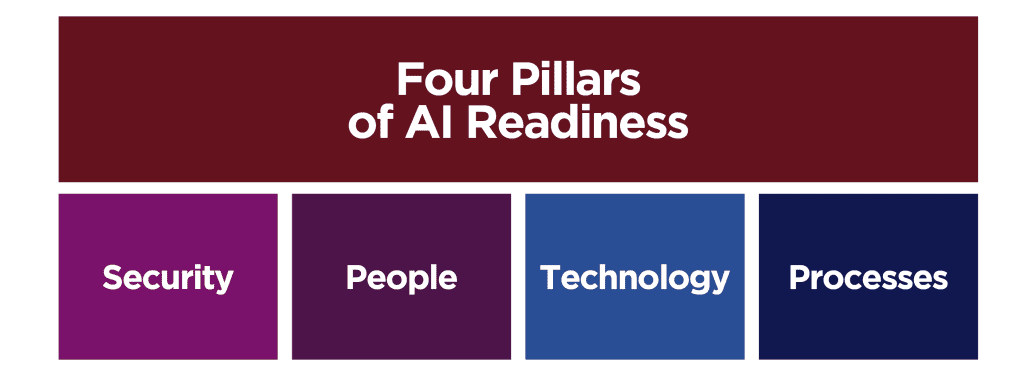Breathing new life into used devices helps to keep electronic components out of landfill and reduce costs
Contributing to circular economies by repairing, re-using, and recycling old or broken devices helps reduce electronic waste and its impact on our world. At Lenovo, we have worked for years to ensure that our supply chains and manufacturing processes are as circular as possible. One of our recent initiatives includes offering refurbished devices through our recently launched Lenovo Certified Refurbished offering. And now we are tapping into the power of AI to help expand our refurbishment capabilities.
Challenge: Exploring the Potential of AI
Traditional approaches to refurbishing devices are labor intensive, with engineers manually inspecting and testing each device to determine whether they can be fixed or harvested for spare parts. The refurbishment process also holds a wealth of information about the durability and common failure modes of device components—insights that can help inform future considerations around design and product lifecycle management.
“We recognized that AI holds tremendous potential to enhance the efficiency of our sustainable refurbishment initiatives,” comments Aaron Zhang, ISSC Reverse, Repair, Refurbish Director at Lenovo. “For engineers, it could help to automate time-consuming and repetitive device inspections and even recommend personalized refurbishment options for customers. And for Lenovo research and development teams, AI promises to deliver faster access to insights gleaned from the refurbishment process.”
62 million tons of electronic waste generated globally each year
<7.2% of the global economy is currently circular
<25% of worldwide electronic waste is recycled
Solution: Lenovo’s AI-powered refurbishment
To enhance our refurbishment services, Lenovo harnessed the power of Lenovo edge computing solutions, internet-of-things sensors, machine learning and computer vision technology to develop an AI solution that automatically detects device issues by analyzing images of internal components.
Built using AI algorithms optimized for quality control and predictive maintenance workflows, the Lenovo solution helps engineers identify faults, find the most effective repair procedures, and select the optimal replacement parts—all in real time. As part of a phased development process, Lenovo uses the solution to optimize and improve efficiency of inspection of used devices in Lenovo’s Mobile Business Group (MBG).
Lenovo’s Four Pillars of AI Readiness

Pillar 1: Security
- Help ensure the devices undergoing refurbishment are data sanitized.
- Mitigated the risks of user data breaches through technology and processes: “We protect customer data at every step in the refurbishment process, whether that is by making sure that devices are encrypted before processing or putting in place strict data access policies at refurbishment facilities,” comments Zhen Li, Senior Manager – Services Supply Chain Strategy & PMO, SSG. “To ensure compliance with data security regulations, we also include robust privacy protections in all of our supplier agreements and contracts.”
Pillar 2: People
- Explored how augmenting traditional human workflows with AI tools would create new opportunities to protect and empower employees. Zhang explains: “Our AI solution greatly enhances human productivity, makes refurbishment work more rewarding by removing repetitive manual tasks, and can even help managers ensure robust safety procedures on the factory floor.”
Pillar 3: Technology
- Refurbishment Objectives: Collaborated with AI experts to define the refurbishment objectives that would be supported by Machine Learning Models (MLMs), such as quality control, predictive maintenance, and inventory optimization.
- Data Requirements: Assessed the data requirements for training and deploying MLMs in AI-enabled refurbishment. Considered factors such as the type of data sources available, data quality, quantity, variety, and the need for real-time and historical data.
- AI Model Selection: Evaluated the complexity and interpretability of MLMs, considering the balance between model accuracy and explainability. As a result, only those MLMs were selected that provide the best trade-off between predictive power and interpretation based on use case.
- Performance and Scalability: Monitored the performance of MLMs handling large datasets, processing tasks efficiently, and adapting to changing refurbishment requirements. Choose models that deliver accurate predictions, maintain performance under varying workloads, and scale seamlessly.
Pillar 4: Processes
- Identified multiple ways that the AI solution could help transform existing processes, including augmenting diagnostics processes, supporting predictive maintenance with real-time device monitoring, and mining historical data to forecast demand for spare parts with greater accuracy.
“We’ve really only scratched the surface of the potential AI solution,” adds Zhang. “While we see immediate improvements through automation and data analysis, the solution also has the potential to provide valuable feedback on key components so we can adjust design processes and ensure that new parts will last longer in the future.”

Result: Shaping a More Sustainable Tomorrow
While still in its early stages, Lenovo’s AI-powered refurbishment initiative shows tremendous potential to enhance sustainability by helping more customers refurbish their devices. For example, in a recent study it was found that 70% of laptops discarded by first-time users can have double the lifetime by being re-used.
At Lenovo, 71% of devices collected by Lenovo are refurbished or re-used for parts, supporting a circular economy. Li comments: “Our customers not only increase the working life of their devices; they also typically enjoy enhanced specifications and a boost in performance as a result of the upgrades made by our engineers.”
70% of discarded laptops could have double the lifetime by being re-used
71% of devices collected by Lenovo are refurbished or re-used for parts
Achieving Next-Level Efficiency Improvements
Leveraging AI to support device refurbishment for Lenovo MBG has already delivered significant efficiency improvements. Since deploying the AI solution, Lenovo has increased the average output units per hour for a single model from 30 units an hour to more than 65 units—representing a 116% increase in efficiency.
Lenovo’s AI-driven refurbishment workflow has also delivered significant cost reductions. Zhang explains: “In just one year, we were able to reduce the annual costs associated with smartphone refurbishment by $100,000, while also ensuring that 100% of refurbished orders were fulfilled on time. In the coming months, we anticipate that we will be able to make a further saving of $110,000 by harnessing the AI solution to enhance production planning and optimize the purchasing of spare parts. These significant savings release more capital that we can reinvest in researching new design features to make our products even more circular and sustainable.”
By leveraging AI for refurbishment, Lenovo was able to gain:
- 116% efficiency boost in average hourly output units
- $100,000 annual cost-saving
- 100% of refurbished orders fulfilled on-time
To find out how you could benefit from Lenovo’s experience and AI-powered solutions in your refurbishment processes, visit Lenovo.com or speak to your Lenovo contact.
